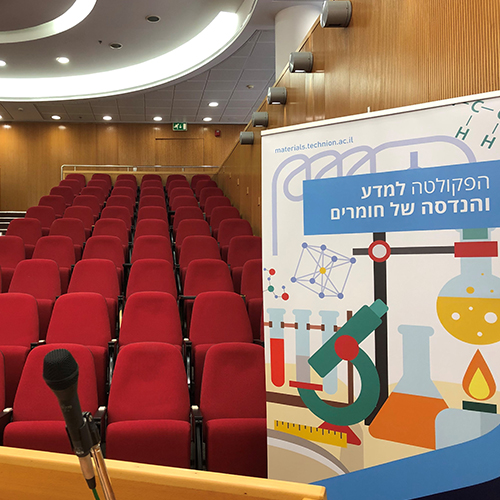
Dr. Sebastian Beyer
18/06/2025
Room E410, North Campus & via ZOOM
12:00 - Jerusalem time / 17:00 - Beijing time
Contemporary materials science is grouped into different disciplines, often with little interdisciplinary cross-talk. Metal-organic Frameworks (MOFs) are known e.g. in semiconductor research, electrode materials design and fabrication of chemical sensors. Similar, polyelectrolyte self-assemblies, hydrogels and extracellular matrices are known to be Biomaterials with applications in Tissue Engineering and Regenerative Medicine. Interdisciplinarity can be a great source of innovation. The Beyer group at CUHK has followed that paradigm since 2019 to spearhead Metal-organic Frameworks (MOF)-based Biomaterials for Tissue Engineering and Regenerative Medicine. This direction has now grown to an emerging and increasingly accelerating research field.
The present talk will summarize our fundamental insights into the crystallization mechanism of the prototypical MOF – Zeolitic Imidazolate Framework 8 (ZIF-8) using advanced spectroscopic methods.
These include synchroton-based static powder and in situ liquid X-ray Absorption Fine Structure (XAFS) spectroscopy as well as Liquid-Jet X-ray Photoelectron Spectroscopy (XPS). Our studies provide insights into the occurrence of transient coordination species during ZIF-8 crystallization, the deprotonation mechanism of imidazoles during ZIF crystallization as well as the electronic structure of imidazole and imidazolate species within MOFs. These fundamental insights precede and facilitate our current development of colloidal MOF biomaterial formulations for the regenerative treatment of cardiovascular diseases.
Future work will address the development of MOF-based biomaterials for neuronal tissue e.g. for the improvement of invasive Brain to Machine Interfaces (BMI). A particular focus will lie on electrically conductive MOF-hydrogel composite materials that have neuro-protective or neuro-regenerative effects, and on the biological evaluation of these materials in microfluidic microphysiological tissue systems. This future research will benefit from extensive experience of the Beyer group to evaluate hydrogel-based biomaterials using classical in vitro methodologies, microfluidic microphysiological tissue systems and pre-clinical animal models. Advanced spectroscopic methods such as XAFS spectroscopy are instrumental to characterize MOFs with desired properties and will allow extensive collaborations with colleagues in other fields of materials sciences.


